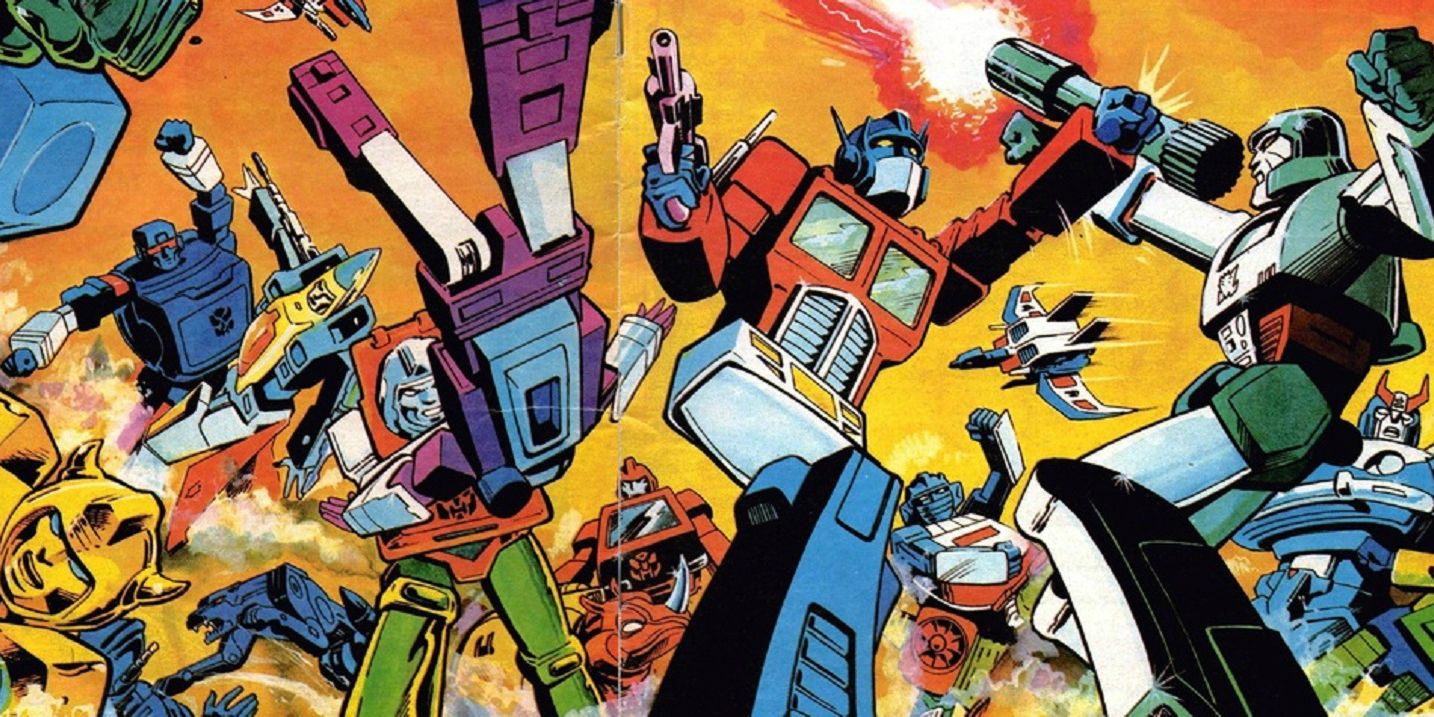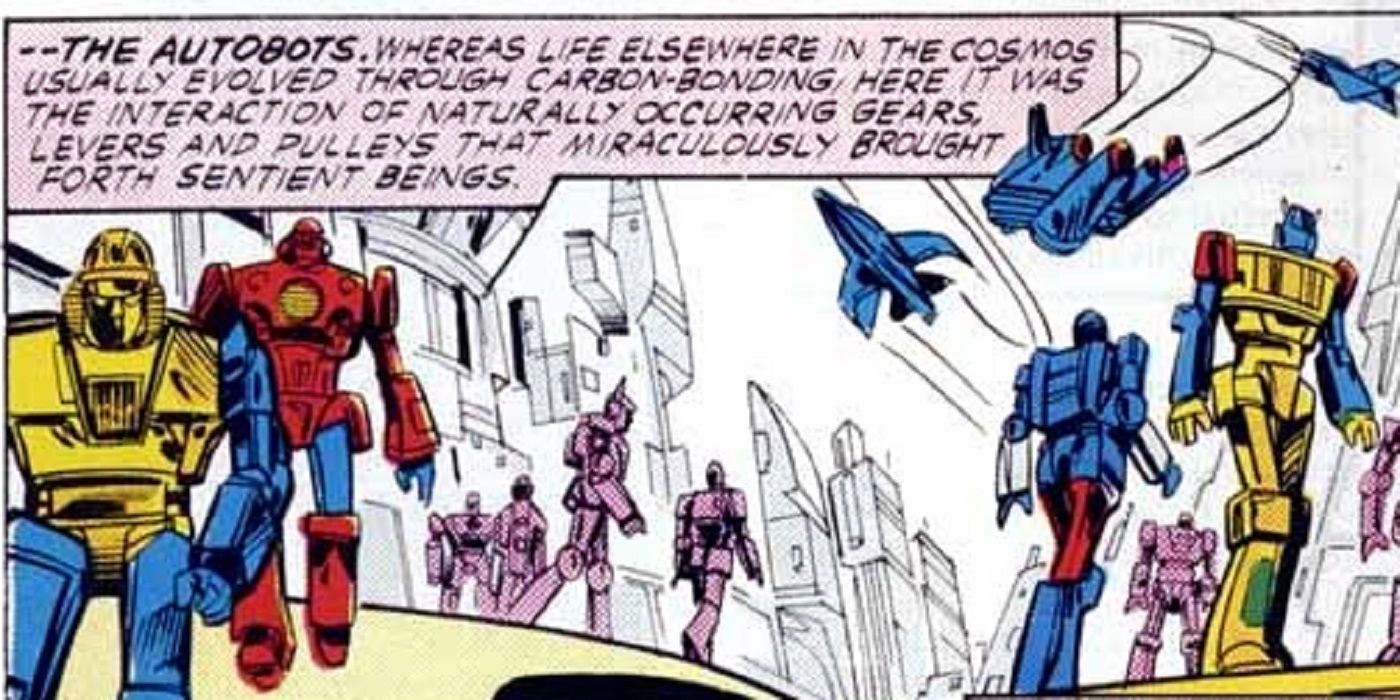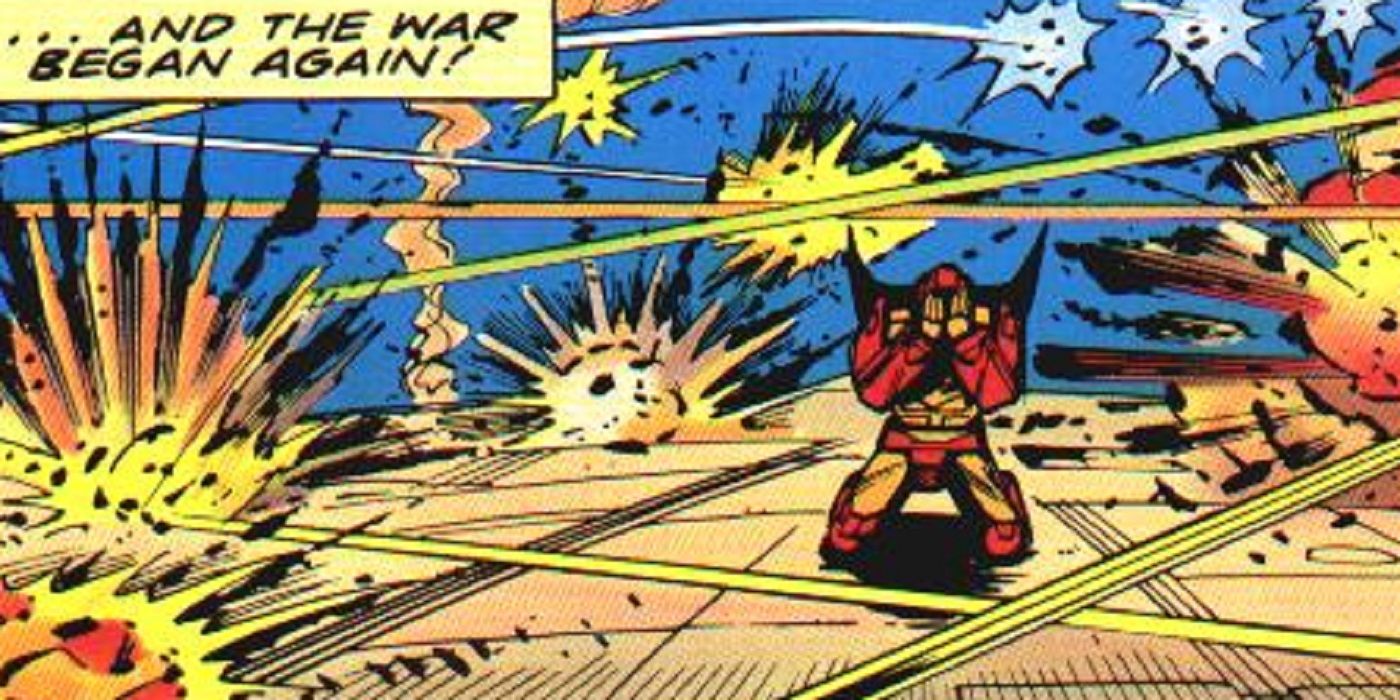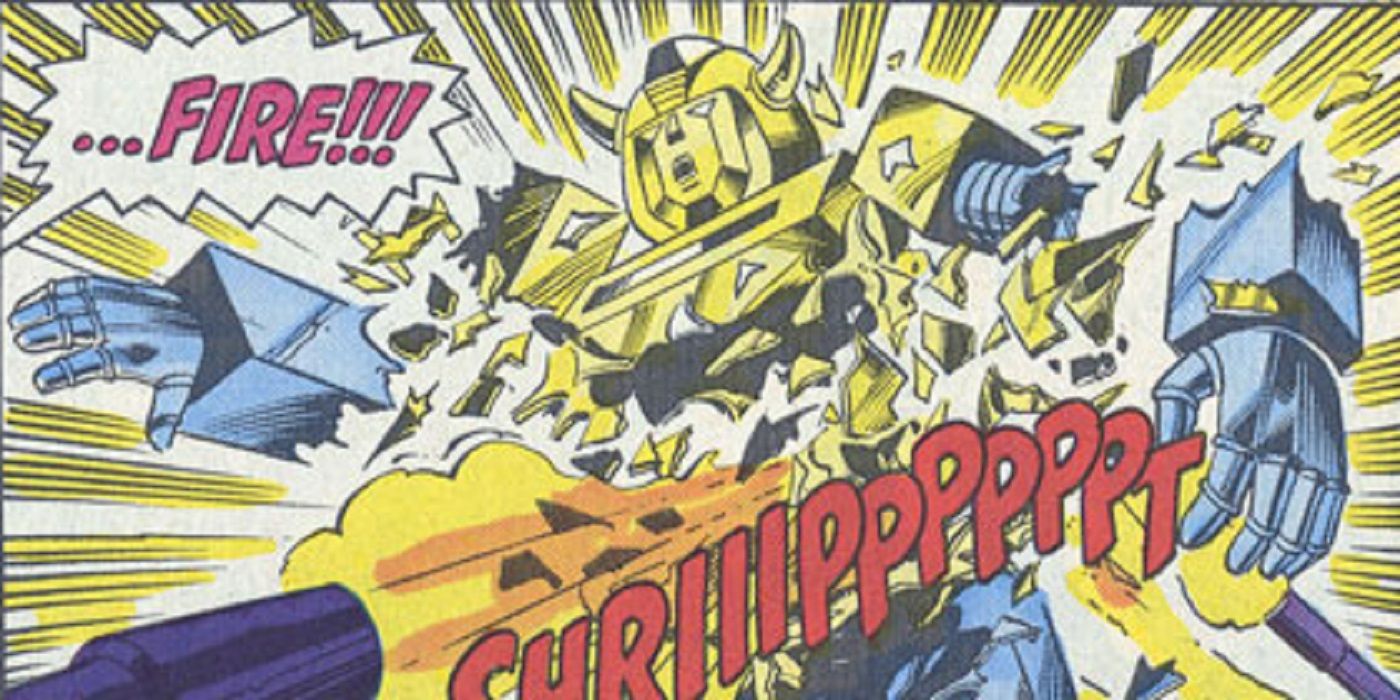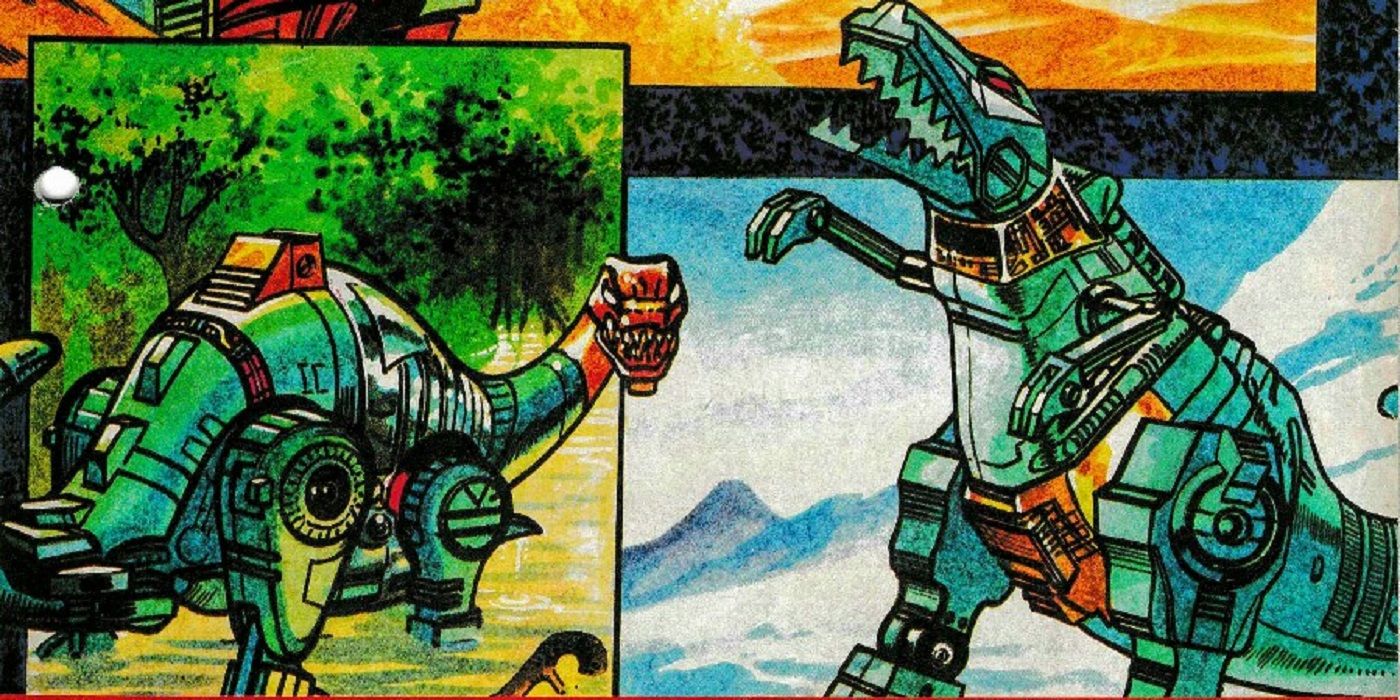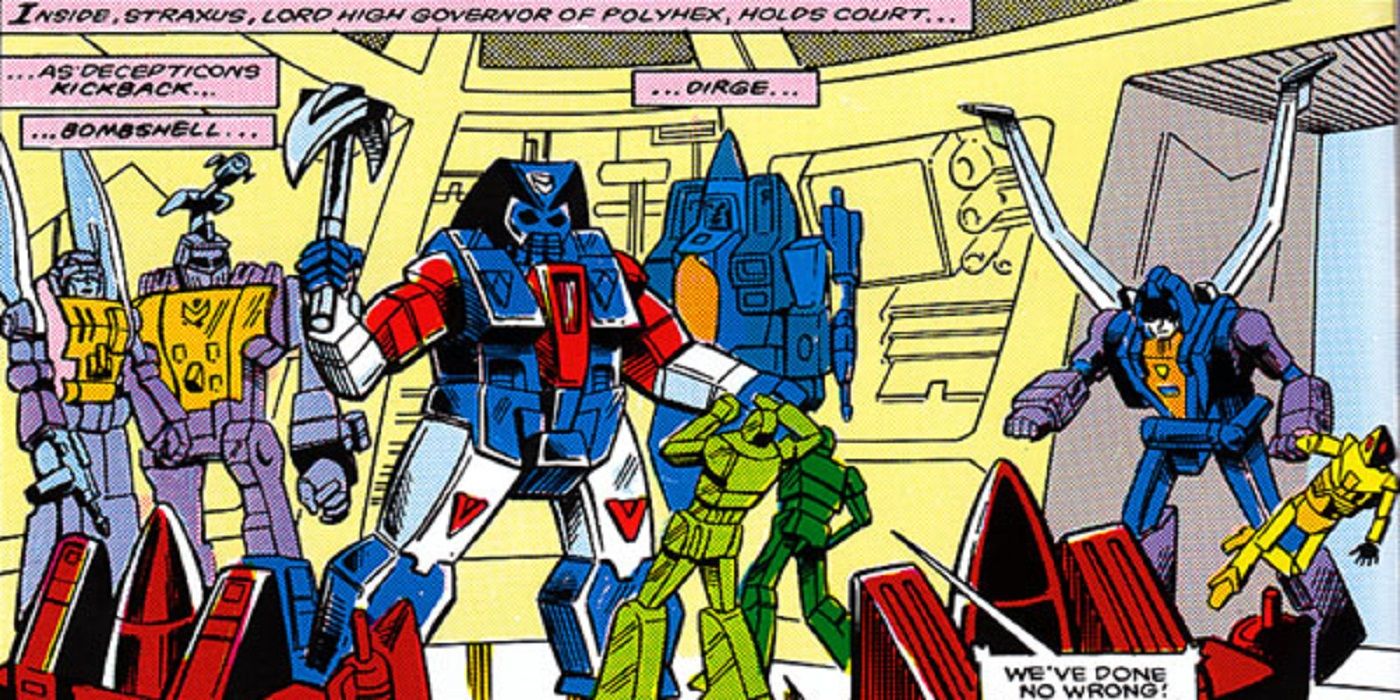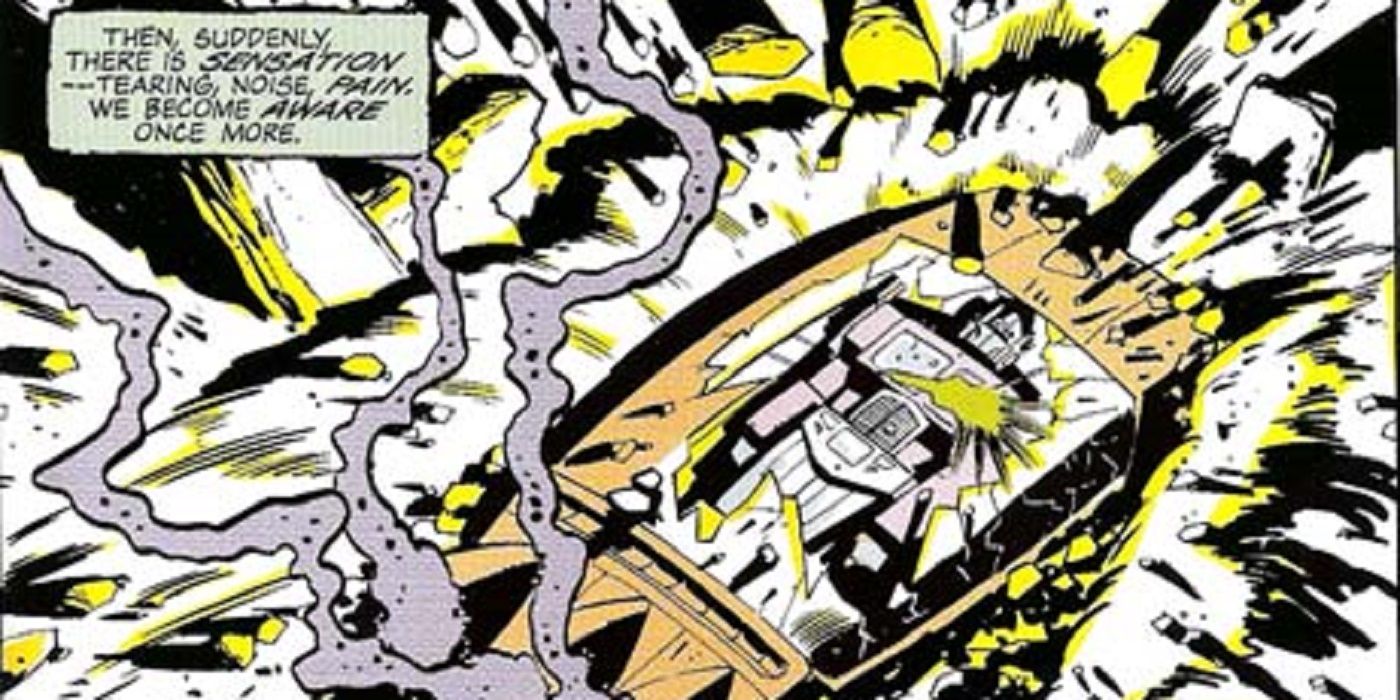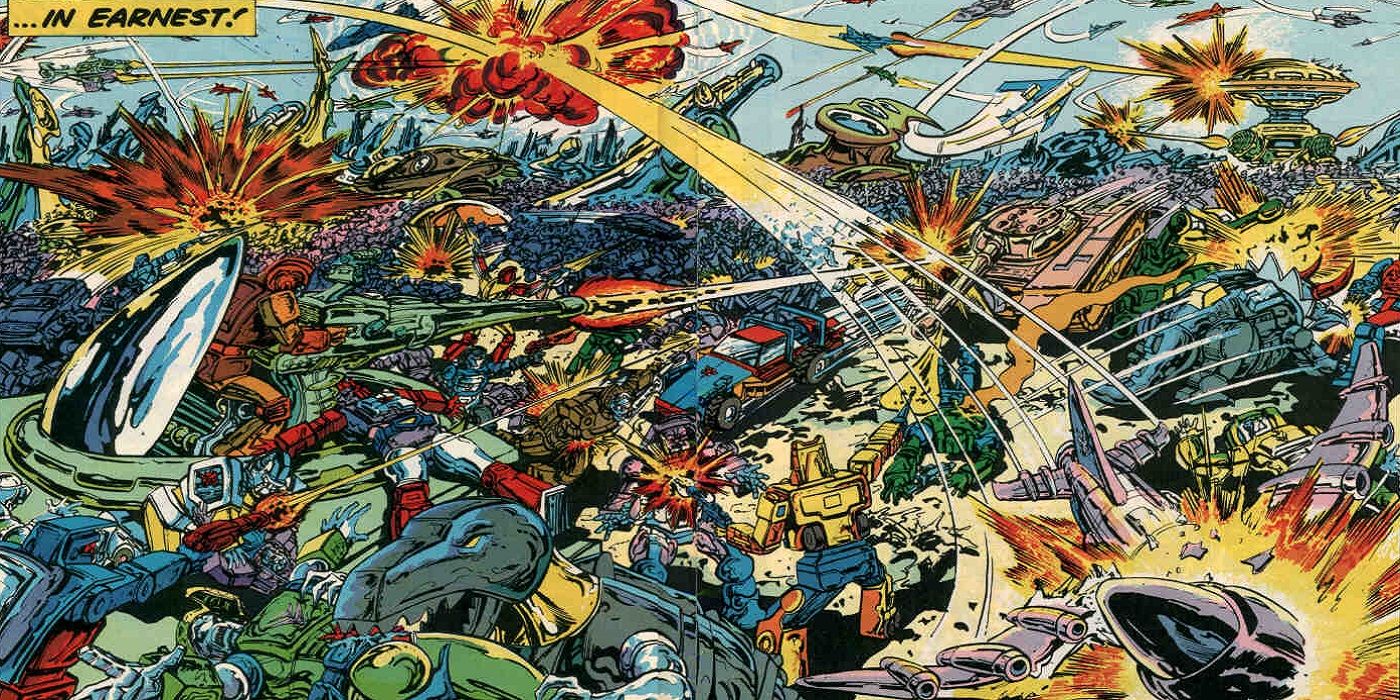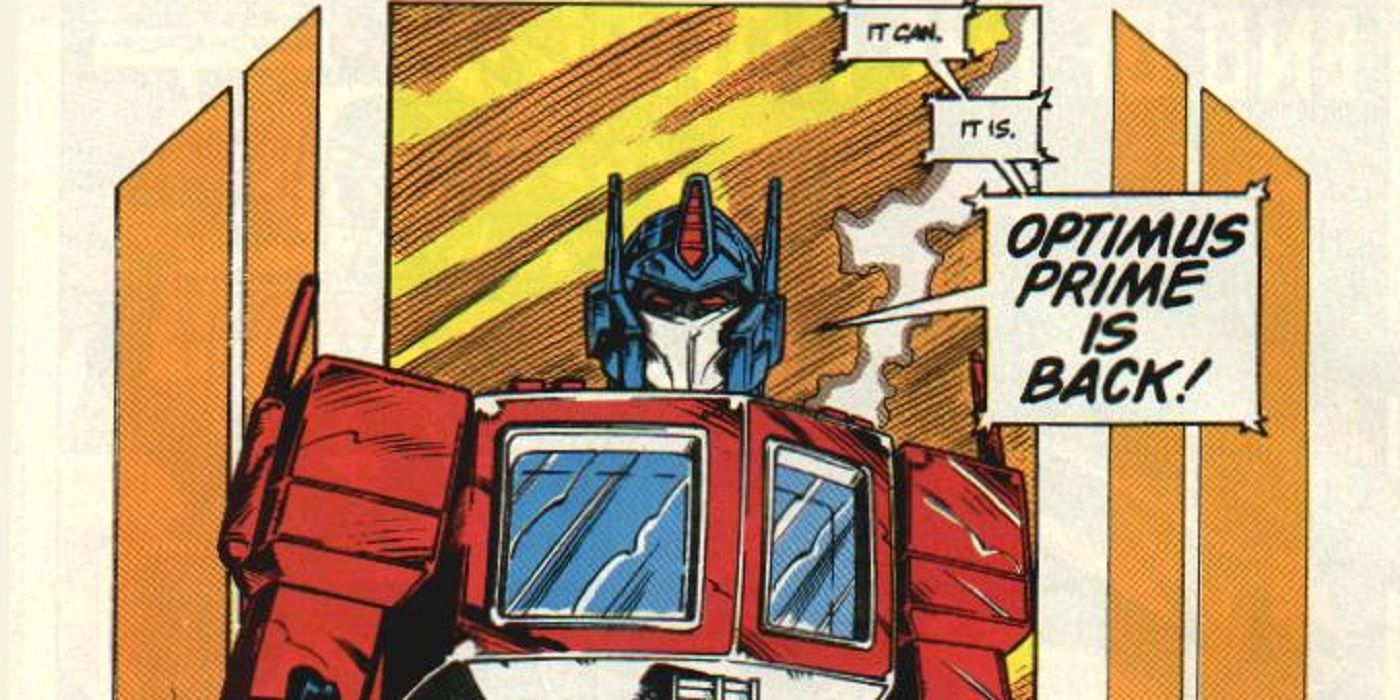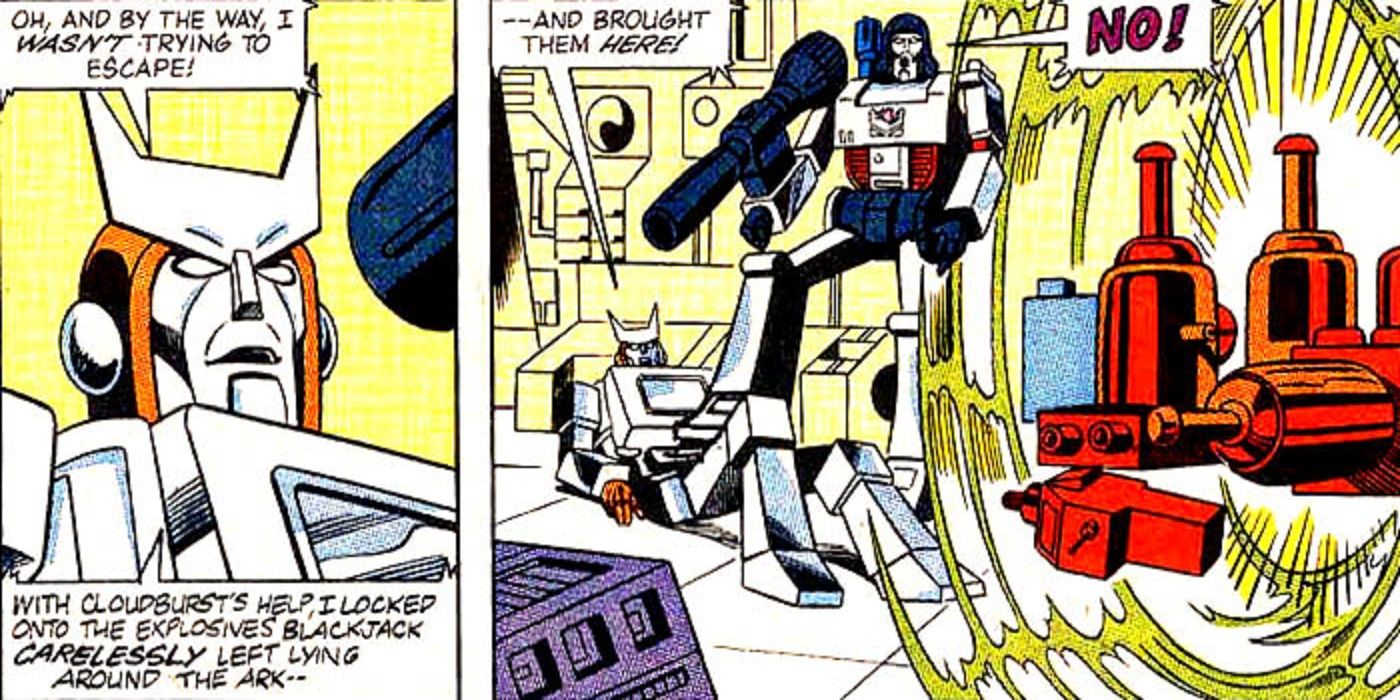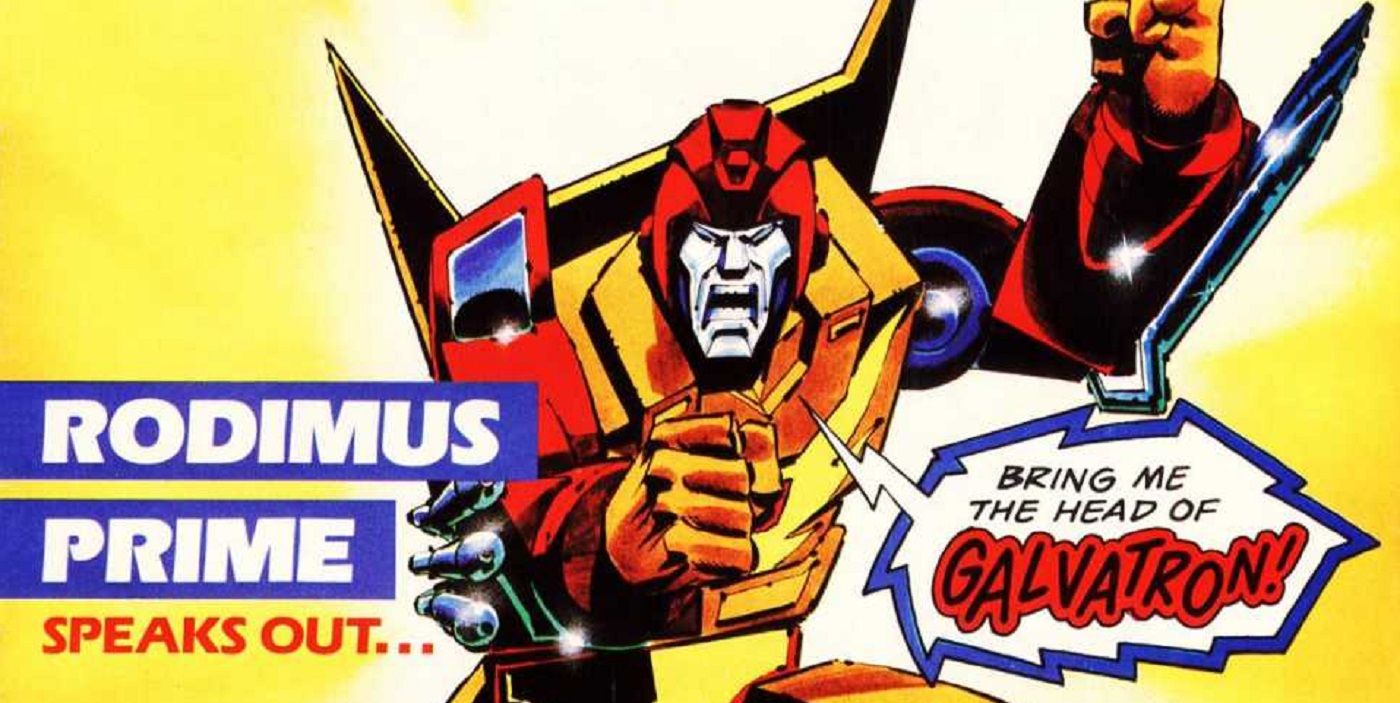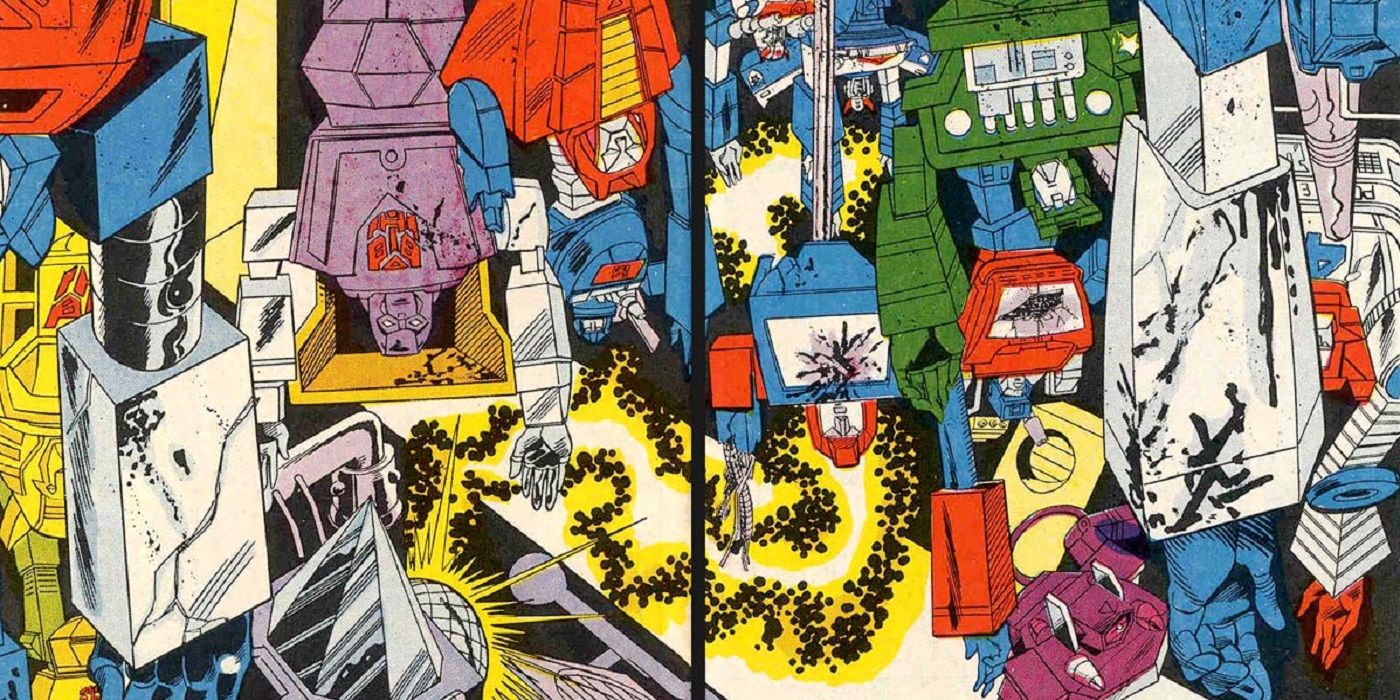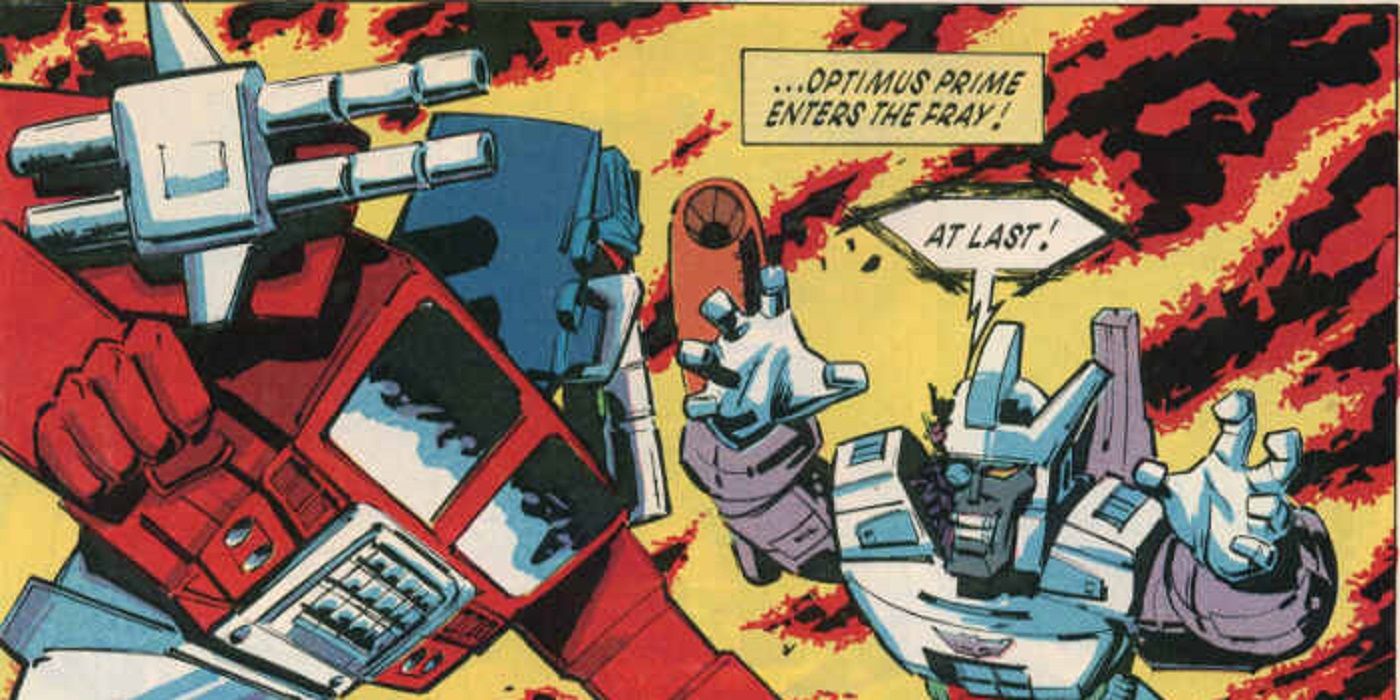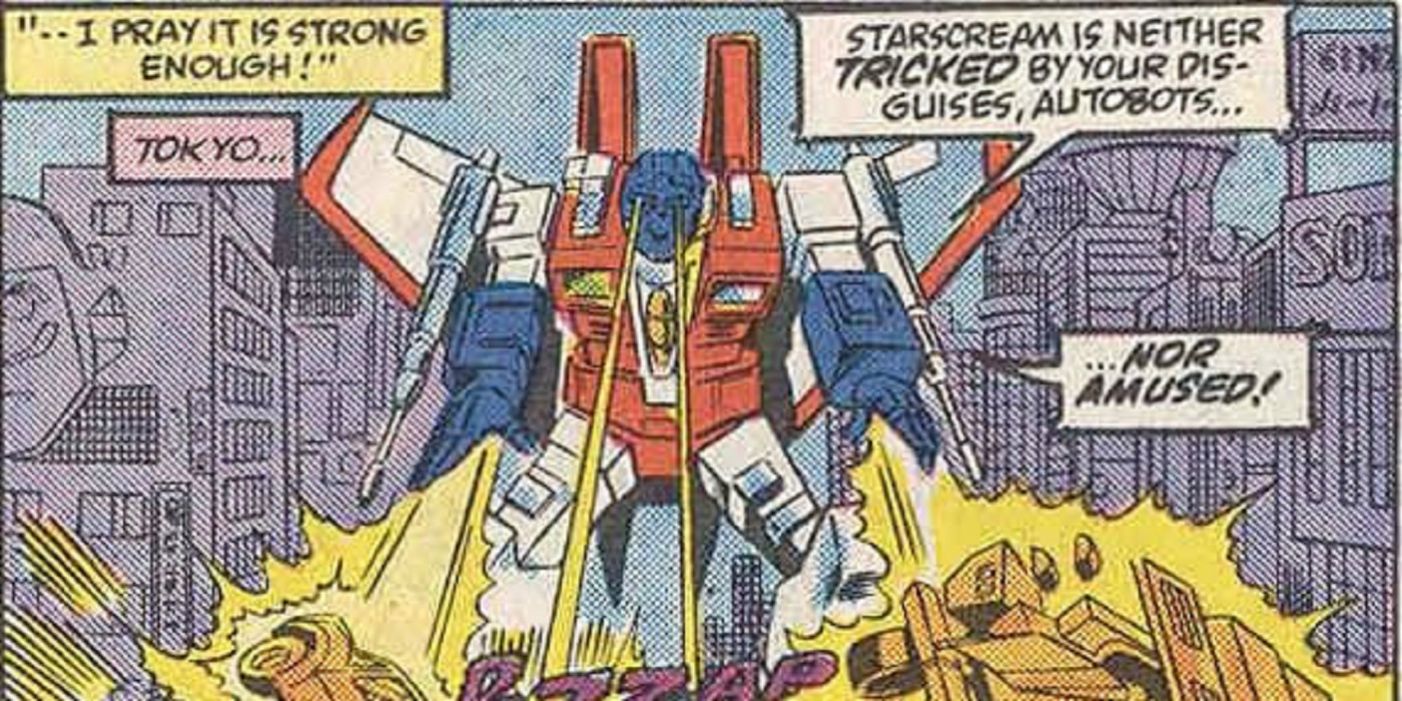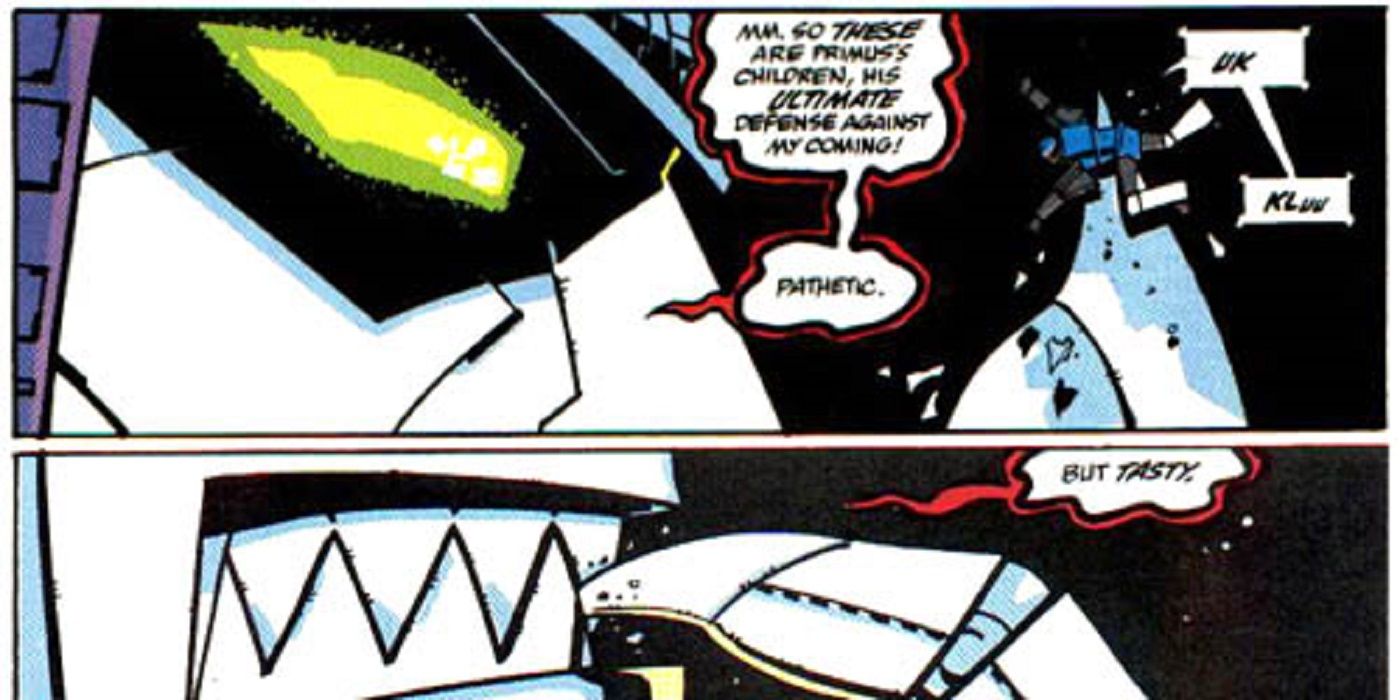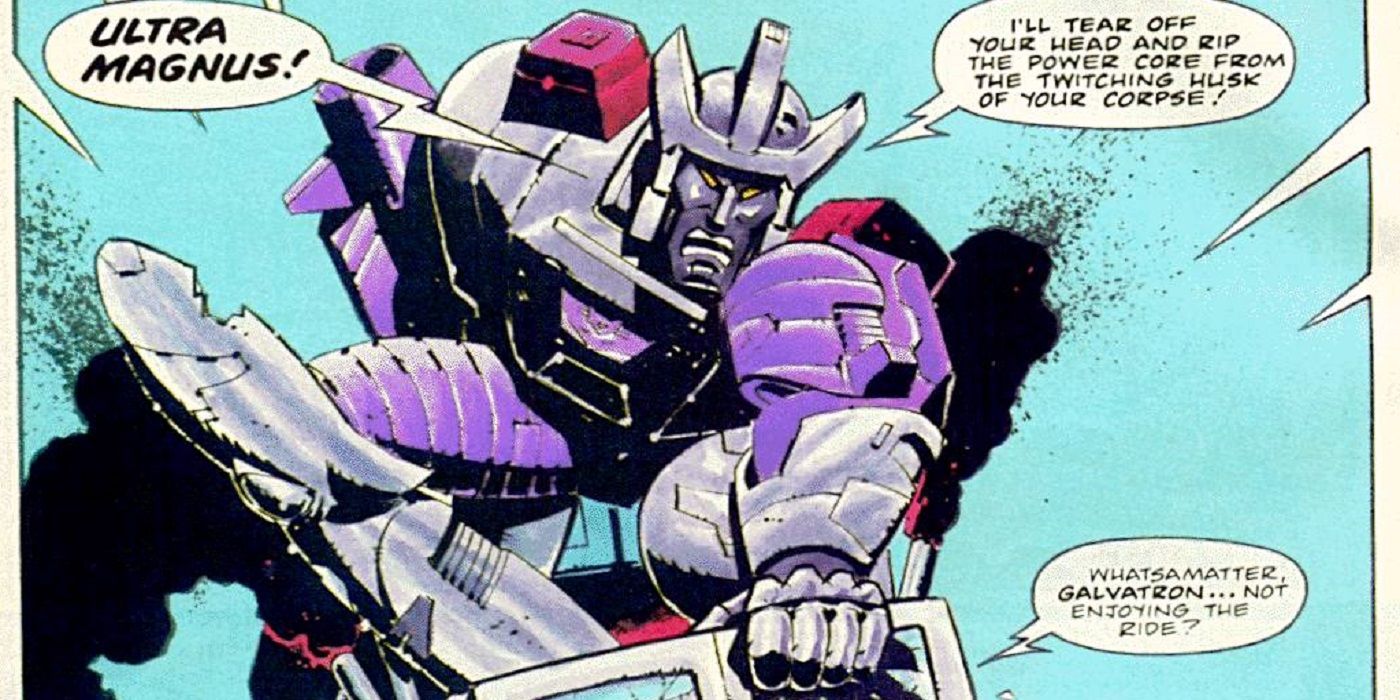Since they first invaded toy stores in 1984, the warring Robots in Disguise have appeared in numerous cartoons, movies, books, comics and more. Each new product has helped to expand the mythology in some way, turning both Autobots and Decepticons from (admittedly very cool) toys into fully expanded, well-rounded characters.
RELATED: PRIME TIME: 13 Classic Optimus Prime Moments
The greatest credit for this development isn’t down to the original carton or even the helpful character bios that adorned the toy packaging. The Marvel comic, running for 80 issues in the US and 332 issues in the UK, produced a stream of entertaining stories that took both popular and obscure Transformers alike and used them in often unexpected ways. With “Transformers: The Last Knight” on the horizon, and rumors of the shocking betrayals and new threats that it may contain, we’ve selected 15 epic moments from Marvel’s Transformers comics to get you in the mood. Transform, roll out and read on!
15 TRANSFORMERS MINISERIES (#1-4)
Despite its significance as readers’ introduction to the Transformers, these four issues can’t help but feel rather basic, with a tone somewhere between an info dump and a toy commercial. Characters introduce themselves and describe their powers in great detail, while Frank Springer’s artwork portrays most characters as close to their toy forms, rather than the more expressive, humanized features that they would later adopt. This wasn’t helped by many characters being inconsistently drawn and colored, leading to unintentional comedy as characters switch color schemes, and gain and lose body parts between panels.
Regardless, the series was crucial for setting into place the building blocks that would underpin the entire franchise. The age-old conflict, the crashed Ark, the renewal of hostilities on a new world -- it’s all here. Ralph Macchio and Jim Salicrup do a good job of juggling the large cast and there’s even a guest appearance by Spider-Man (in his black costume) to show that the series takes place in the Marvel Universe. The series sold so well that the decision was quickly taken to turn it into an ongoing series. From humble beginnings, something very special was about to happen.
14 PEACE (TRANSFORMERS UK ANNUAL 1989)
The scale of the Autobot/Decepticon conflict is so immense that it’s almost hard to comprehend. The two sides have been fighting for millions of years, have seen cities and worlds all but destroyed by war, and have lost countless friends and comrades to the battlefield. Autobot and Decepticon alike are warriors now, either by necessity or choice. The horror of this war, and the tantalizing prospect of its end, is what makes “Peace” such a tragic, memorable story.
The story appeared in the 1989 “Transformers” annual from Marvel U.K., written by Richard Alan with art by Robin Smith. It is the year 2150 and the last Decepticon has fallen in battle on Cybertron. A weary Rodimus Prime decides to step down, naming Springer as his successor. What no-one knows is that one of the Autobots present, Triton, is a Decepticon spy. He argues that Ultra Magnus should be the leader. Before long, harsh words are said, shots are exchanged, and Roadbuster and Triton are killed. Battle breaks out, this time between Autobots, and the war begins again. The final panel, with a distraught Rodimus Prime on his knees as the battle rages around him, is genuinely chilling.
13 GI JOE VS THE TRANSFORMERS (#1-4)
Military types often get a bad reputation for shooting first and asking questions later. Members of G.I. Joe do their best to live up to this stereotype in the first issue of this 1987 miniseries, blowing up Bumblebee, everyone’s favorite yellow Volkswagen Beetle. Written by Michael Higgins with art by Herb Trimpe, "G.I. Joe VS The Transformers" saw the Joes and Cobra team up with the Autobots in order to tackle the Decepticon threat. This sounds epic, but unfortunately the execution didn’t quite match the concept.
Part of the reason is that, as its own entity uniting two franchises, the book had to tie into events in the ongoing books. Its publication coincided with the departure of both Optimus Prime and Megatron from the main Transformers comic, leading to both characters abruptly disappearing from the miniseries after the second issue. The book also struggles to deal with its large cast, with characters dropping in and out of the action. By story’s end, the Decepticon threat has been neutralized and Bumblebee has been rebuilt as Goldbug, no doubt creating great confusion for children who were only reading the Transformers title.
12 DINOBOT HUNT (#47-50, Marvel UK)
Even on their best day, the Dinobots were generally considered more surly, hot-tempered and downright savage than the majority of Autobots. This story-arc showed readers that they hadn’t seen anything yet. When the Dinobots reverted to a savage state after their neural functions corroded, the stage was set for an old-fashioned monster hunt. From the Black Rock Desert to a frozen wasteland, the Autobots tried to capture their errant comrades, leading to savage battles and epic destruction.
Simon Furman scripted this four-parter, with art from Will Simpson and Barry Kitson. Each chapter focused on a different squad of Autobots trying to subdue a specific Dinobot, and there’s a pleasing number of lesser-used characters given a chance to shine. Jetfire rides Slag like a rodeo bull, Windcharger, Gears and Cliffjumper track Sludge through waterways and Bluestreak, Huffer and Sideswipe are nearly sent to the great scrapheap in the sky. This arc removed the Dinobots from circulation for a while as the damage to their neural circuits was repaired, but what a way to go.
11 RETURN TO CYBERTRON (#17-18)
In recent years, a large proportion of the Transformers’ adventures have been set on Cybertron. Readers have learnt about the history of the planet, the political machinations behind the scenes and many of the cities and locations scattered across the planet. In 1986, though, Cybertron was the great unknown. Readers had followed the Earthbound Autobots for over a year and Cybertron had always been the unattainable goal: the focus of so many efforts to return. So, when the US comic took readers to Cybertron for the first time in a 1986 two-part story, it was a huge deal.
It's fair to say that the Cybertron portrayed here wouldn’t be on many people’s list of vacation destinations. If things were tough for the Autobots on Earth, then their Cybertronian counterparts were in an even worse predicament. Produced by regular Transformers creators Bob Budiansky and Don Perlin, these issues primarily focused on Blaster and Lord Straxus, with the former attempting to destroy the Decepticon’s space bridge to Earth. Blaster’s efforts eventually succeeded, resulting in him and several of his Autobot comrades, including Perceptor, Warpath and Powerglide, being transported to Earth.
10 MATRIX QUEST (#62-66)
When Primus, the legendary creator of the Transformers, was woken from his long sleep, Optimus Prime and company realized that Unicron would soon try to kill him, his old foe. Legends said that the Creation Matrix had the power to stop Unicron, but there was just one problem: it had been lost in space since the original death of Optimus Prime. Thus, the stage was set for a search throughout the Universe, as different teams of Autobots attempted to locate their prize.
Written by Transformers guru, Simon Furman (now writing the U.S. and U.K. comics), and penciled by Jose Delbo and Geoff Senior, the serious purpose of the quest is balanced by individual missions that are often tongue-in-cheek. Each issue pays homage to a different type of film, including “The Maltese Falcon,” Westerns, “Jaws” and “Aliens”.
The story then finishes in frenetic style in #66 as the stakes are raised. The Matrix has come into the possession of the Decepticon called Thunderwing, but that’s not the only problem. It has also been corrupted, turning a force for good into a malevolent force of destruction.
9 LEGACY OF UNICRON (#146-151, Marvel UK)
If there was one thing that the Marvel U.K. Transformer strips did well, it was epics. More often than not, these involved Galvatron, Rodimus Prime, Ultra Magnus and other characters introduced in “Transformers the Movie.” While Bob Budiansky on the US comic preferred to focus on other characters, Simon Furman took every opportunity to play with these new toys. Despite the heavy U.K. focus on Galvatron in the years since the movie, Unicron had not been seen in the comics. When he made his return to the "Transformers" universe, it was in suitably memorable style.
Furman’s ambition certainly can’t be faulted. Working with artists Geoff Senior, Dan Reed and Bryan Hitch, he crafted a tale that spanned two time zones, several worlds and featured a huge cast. Unicron had enslaved the Junkions and was mentally controlling them to repair his body. Meanwhile, Cyclops and Scourge manipulated a bloody conflict between Autobot and Decepticon, one intended to destroy both factions. The story is chockfull of great moments, heroic sacrifices (R.I.P. Inferno) and seemingly impossible odds. It also provided fans with another chance to see Death’s Head, the freelance peacekeeping agent who had become an integral part of U.K. continuity.
8 END OF THE ROAD (#76-80)
In a nice touch, the masthead of the final issue of “Transformers” read “#80 in a four-issue limited series,” referencing the title’s origins as a planned four-part miniseries. With its huge cast, grand ambition and plentiful plot threads, the series had come a long way from its origins as a glorified toy commercial. The surprising cancellation of this book meant that Simon Furman had to compress many of his story threads into a mere five issues, but this frenetic pace gives the book a restless energy as the action switches between Cybertron, Earth and elsewhere, with plots coming to abrupt, but largely satisfying, conclusions.
The end of the final issue sees Optimus Prime restored to life and the Autobots taking back control of Cybertron from the Decepticons, probably as close to a happy ending as Autobot fans could have wished for. The only small downside is that the most memorable Decepticon leaders (Shockwave, Megatron, Galvatron and Starscream) are confined to a sub-plot aboard the Ark. The return of Optimus Prime is a great moment, but loses some of its impact when the Decepticon leader he’s faced with is Bludgeon, the blade-wielding Decepticon who is a master of Metallikato (a Cybertronian martial arts form).
7 PRIMAL SCREAM (#56-61)
The concept of the Transformers can be as simple or complex as you want to make it. You could easily use political allegories to explain the rise of the Decepticons, and draw parallels between transformations and characters personalities. Or, alternatively, you could simply look upon the whole saga as good and bad robots that can change shape and like to punch each other. For the longest time, the origins of the Transformers and Cyberton had only been alluded to. The arrival of Simon Furman as writer for the US comic changed that, as he introduced readers to Primus, the creator of the Transformers.
This storyline, by Furman and Jose Delbo, is also notable for featuring the revival of Bumblebee, Jazz and Grimlock as Pretenders and the return, and quick departure, of Megatron. All are already plot points guaranteed to please longtime fans, but the reveal of Primus and the origins of the Transformers were undoubtedly the most significant events of this story-arc. The origins of Primus and Unicron were detailed, re-introducing the latter character to readers of the U.S. comic where he had received less exposure than in the U.K. title. At story’s end, Unicron is seen heading to Cybertron with one thing on his mind: dinner!
6 WANTED, GALVATRON: DEAD OR ALIVE (#113-119, Marvel UK)
One of the most obvious differences between the U.S. and U.K. "Transformers" comics was in the characters that they chose to focus on. While the U.S. comic featured a steady stream of new characters linking to new toy releases, they largely tended to steer away from the future Autobots and Decepticons introduced in “Transformers the movie.” In contrast, The U.K. comic embraced these characters, with Simon Furman using them as pivotal characters in some of his greatest epics.
Rodimus Prime hires Death’s Head to hunt down Galvatron, resulting in Death’s Head following Galvatron to present day Earth. There, poor Bumblebee is blown up and subsequently resurrected as Goldbug (in an entirely different manner to his origin in the U.S. comics) and Ultra Magnus and Galvatron resume their rivalry. The conflict between Magnus and Galvatron in the animated movie was brief, but through their appearances in the comics, Furman really builds up their rivalry. Magnus is way out of his depth against the raw savagery of Galvatron - practically scared out of his wits - but he never stops trying to fight the good fight. With art by U.K. stalwarts including Geoff Senior and Dan Reed, these are some darn fine comics.
5 THE NEW ORDER (#5-12)
Parents who were happy to buy the "Transformers" comic for their children believing it was the child-friendly adventures of some popular toys could not have been more wrong. True, the Marvel series could never have been described as grim and gritty in its early days, but it certainly had no qualms about doing terrible things to its cast members. Case in point: in the fifth issue, Shockwave announces his arrival to the book’s cast by nearly killing all the Autobots, hanging them from the ceiling like slabs of meat, and by removing Optimus Prime’s head from his body. Nightmare-worthy material for a five-year-old.
This storyline, by Bob Budiansky and a rotating team of artists, saw several noteworthy events for the series. The Dinobots were introduced, Megatron and Shockwave had the first of their numerous clashes over the leadership of the Decepticons and the Creation Matrix was used to bring the Constructicons and Jetfire to life. By the end of the story, Optimus Prime got his body back and the Autobots once again had hope for the future.
4 TIME WARS (#199-205, MARVEL UK)
If there’s a Marvel U.K. equivalent of the Michael Bay "Transformers" movies, it’s probably this epic time-bending story from 1989. In this arc, everything is turned up to 11, with mindless destruction and character deaths around every corner. Previous crossovers between present day Transformers and their future counterparts had tended to focus on several key characters. Instead, this story throws together multiple Autobots and Decepticons from 1989 and 2009, leading to all the misunderstandings, fighting and time distortion that would be expected.
There are some genuinely memorable moments in this story: Galvatron fighting side-by-side with Megatron, Optimus Prime meeting Rodimus Prime, the return of Ravage, and Autobots and Decepticons are forced to fight alongside each other to survive. Simon Furman does a good job of weaving together plot threads, with nice character work helping to ground the high-stakes of the imminent time storm. Andrew Wildman, Geoff Senior, Lee Sullivan and Robin Smith have the unenviable task of drawing the countless characters involved, but all rise to the occasion with gusto. This was the last mega-epic in the U.K. comic before the amount of U.K. only material was drastically reduced. What a way to go.
3 UNDERBASE SAGA (#47-50)
One constant of the U.S. “Transformers” comic was that new characters were constantly being introduced, mirroring the range of characters released for the toy line. By the time that the title celebrated its 50th issue, the number of characters had grown to truly excessive levels: The Headmasters, Powermasters, Triggermasters, Throttlebots, Pretenders, Special teams and more. Quite simply, the cast was so large that the majority of Autobots and Decepticons were now background characters, with the majority of the original cast members having long been sidelined in favor of newer characters. Bob Budiansky addressed this problem in a rather direct fashion, the 50th issue of “Transformers” coldly dispatching with countless Autobots and Decepticons.
The concept of the story was that Starscream has gained the power of the mythical Underbase, the combined knowledge of the Transformer race. He subsequently goes mad with power, merrily killing any Transformer who gets in his way. Make no mistake: this is carnage. The slaughter is so widespread that, rather than characters getting heroic sacrifices, groups of 5-10 characters are often killed in a single panel. Who would have thought that an issue of Transformers would be in contention for the most death-filled Marvel comic?
2 THE UNICRON SAGA (#69-75)
It had all been leading to this. Ever since Simon Furman had begun his tenure on the U.S. "Transformers" comic, he had been planting the seeds for an epic confrontation between Unicron and the inhabitants of Cybertron. The threat was real, enough to compel Optimus Prime to surrender to Scorponok in the hope of forming an allegiance with the Decepticons. And, when Unicron finally reached Cybertron, the results were exceedingly bloody. Familiar characters, both Autobot and Decepticon, were eaten, stepped on, blown up, incinerated and more as they desperately tried to fight this planet-sized foe. Sadly, Unicron didn’t answer the age-old question of whether Transformers taste like chicken, but it was clear that he was a formidable, almost unbeatable, foe.
Andrew Wildman penciled this story arc, with Geoff Senior stepping in to pencil the last issue, the entirety of which is taken up with that epic confrontation with Unicron. The mark of a good story is when a hero can overcome seemingly insurmountable odds through organic means instead of some random deus ex machina. When Optimus Prime used the Matrix to destroy Unicron (essentially destroying him with life) it was a bittersweet but satisfying ending.
1 TARGET 2006 (#78-88, MARVEL UK)
The original and best Marvel U.K. epic, this eleven-part story introduced readers to the new leaders, Ultra Magnus and Galvatron, as well as Cybertron based characters such as The Wreckers. When Galvatron, Scourge and Cyclonus arrive on present-day Earth, they quickly take control of the Decepticon forces and soundly trounce the leaderless Autobots. Ultra Magnus has also arrived on Earth, but will even his power be enough to turn the tide?
As first introductions go, that of the “Transformers: The Movie” characters are superb. Scourge and Cyclonus are coldly efficient, Galvatron is danger personified and Ultra Magnus has an unbreakable spirit. As would become a running theme in his battles with Galvatron, he is outmatched for power but still fights on, aptly stating “As an Autobot I can do no less!” Issue #86, the entirety of which is devoted to an increasingly destructive battle between Magnus and Galvatron, is rightfully acclaimed. Add in the Autobots teaming up with Megatron and the shock of mind-controlled friends and returned foes, and the quality of this story becomes clear. Simon Furman, Jeff Anderson, Will Simpson, Ron Smith and Geoff Senior were the creative team involved in crafting this tale, the greatest Marvel Comics "Transformers" epic.
Do you have any other epic moments or characters from Marvel’s Transformer comics? Let us know in the comments or on Facebook!

